Key takeaways
- Activist teacher resources empower educators and students to engage with social issues, fostering reflection and action beyond mere knowledge acquisition.
- WeVideo is a user-friendly platform that promotes collaborative video projects, enhancing student engagement, creativity, and teamwork.
- Despite its benefits, challenges include internet reliability issues and limitations in advanced editing features that may affect project execution.
- Teacher support is crucial for guiding students in tech projects, transforming initial uncertainty into confidence and active participation.

Understanding activist teacher resources
Activist teacher resources are more than just lesson plans or textbooks—they are tools that empower both educators and students to engage critically with social issues. When I first encountered these resources, I felt a surge of hope; finally, materials that spoke directly to real-world challenges and encouraged meaningful dialogue. Have you ever noticed how a simple resource can ignite passion and transform a quiet classroom into a space buzzing with purpose?
These resources often blend factual information with emotional storytelling, making complex topics accessible and relatable. From my experience, this combination helps students connect personally with issues like inequality or environmental justice, turning abstract concepts into lived realities. Isn’t that the ultimate goal of teaching—to move minds and hearts simultaneously?
At their core, activist teacher resources invite reflection and action, not just knowledge for knowledge’s sake. I’ve seen firsthand how incorporating these tools encourages learners to question, debate, and ultimately feel empowered to make change. How often do we get to witness education sparking genuine transformation? That’s why understanding these resources is crucial for anyone committed to teaching with purpose.
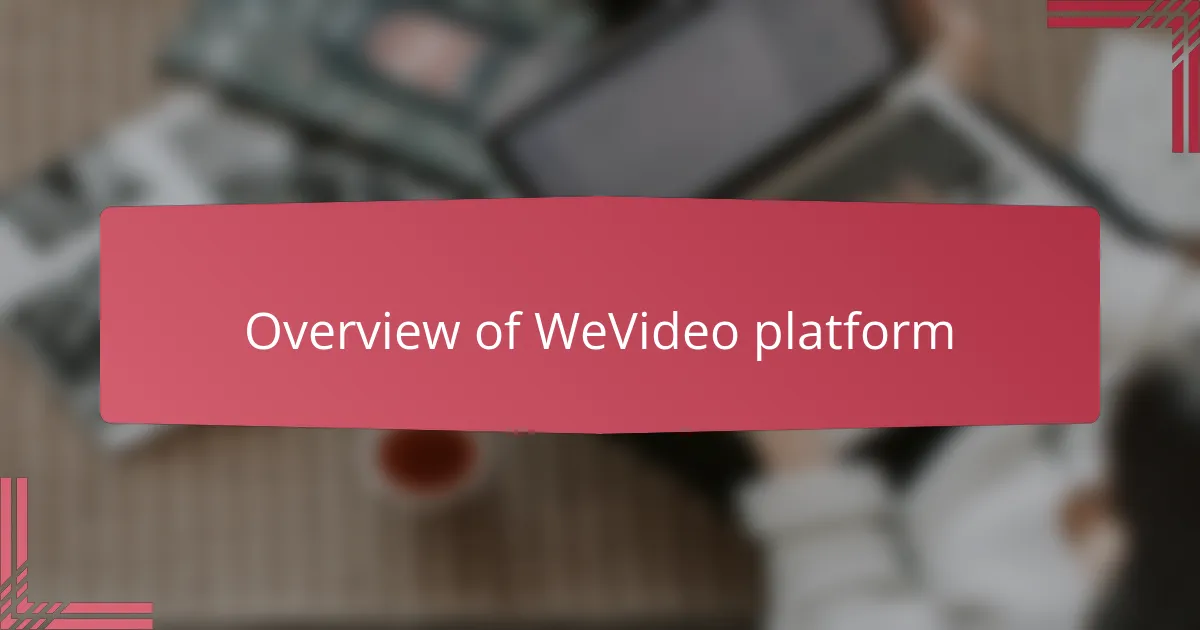
Overview of WeVideo platform
WeVideo is a user-friendly, cloud-based video editing platform designed to make multimedia projects accessible for educators and students alike. When I first tried WeVideo, I was struck by how intuitive its interface felt, even for someone who isn’t a tech expert. Have you ever struggled with complicated software that drains your enthusiasm before you even start? WeVideo definitely avoids that frustration.
One feature I appreciate is its collaborative capabilities, allowing multiple users to work on the same project seamlessly. This made it easy for my students to contribute their voices in real time, which felt like a digital extension of our classroom discussions. Isn’t it incredible when technology actually brings people together rather than pulling them apart?
Besides simple editing tools, WeVideo offers a solid library of assets like music and transitions, which help bring activist projects to life without needing extra software. From my experience, these options encourage creativity without overwhelming beginners, making the platform an ideal starting point for teachers who want engaging, impactful student videos. Could there be a better way to combine learning and expression?
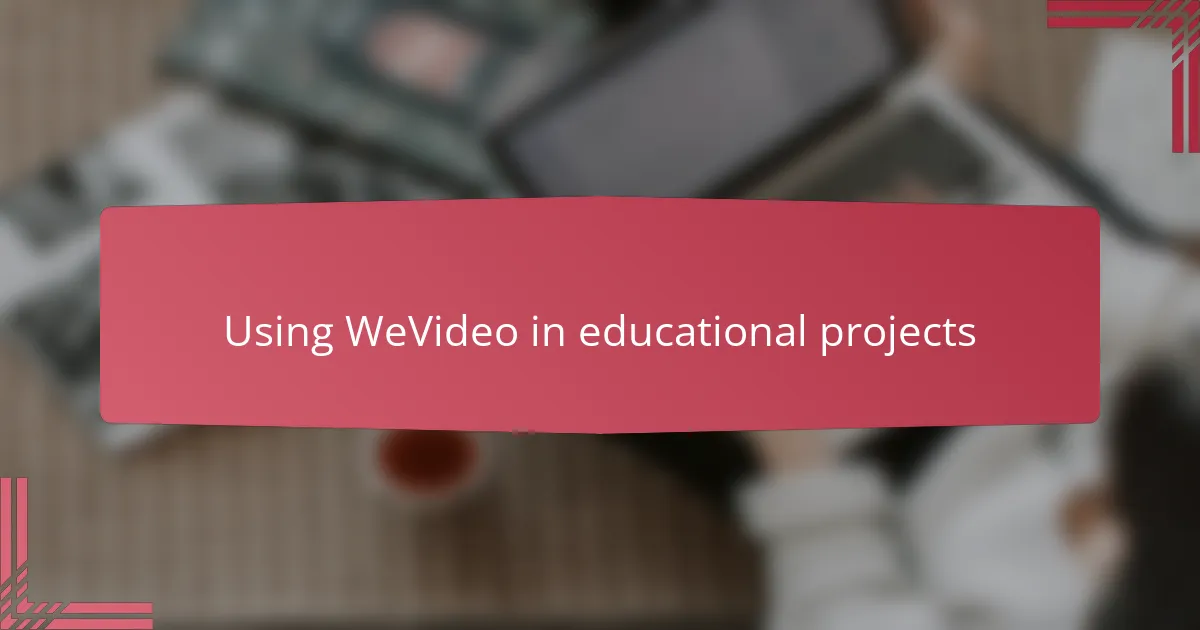
Using WeVideo in educational projects
Using WeVideo in educational projects opens up exciting possibilities for making learning more dynamic and participatory. I’ve noticed that when students get to shape their own narratives through video, they become more invested in the subject matter. Have you ever seen a shy student light up when given a camera and a story to tell? That’s the kind of engagement I look for.
What I find especially valuable is how WeVideo supports collaboration; students can contribute individually and then see their efforts weave together into a unified final product. This mirrors the activist spirit—working together toward a common goal—and it reinforces important skills like teamwork and communication. From my experience, this real-time collaboration sparks a sense of ownership and pride in their work.
Moreover, WeVideo’s accessible features lower the barrier for educators hesitant about tech-heavy projects. I remember feeling daunted by video editing software in the past, but WeVideo’s simplicity helped me confidently guide my students through creating meaningful content. Isn’t it rewarding when technology actually becomes a bridge rather than a hurdle in the learning process?
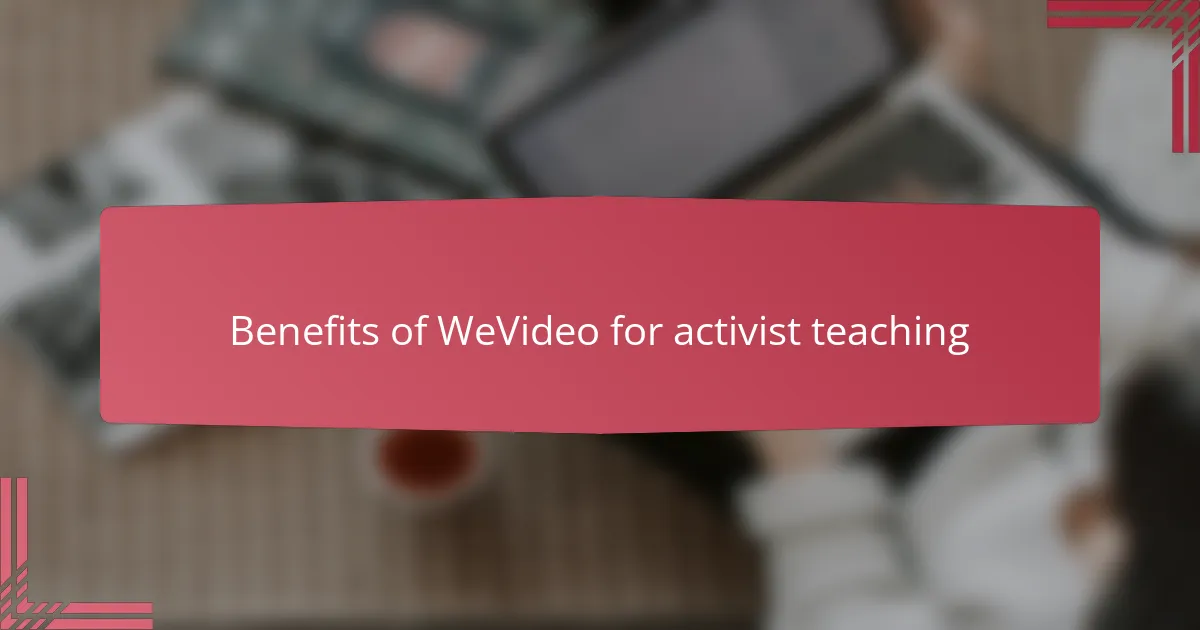
Benefits of WeVideo for activist teaching
One of the biggest benefits I’ve seen with WeVideo in activist teaching is how it gives voice to students who might otherwise stay silent. When my class used it to create videos about social justice, I watched quiet students find confidence through storytelling. Isn’t it powerful when technology becomes a tool for amplifying perspectives that too often go unheard?
WeVideo also makes it easier to bring complex issues to life visually, which is crucial for activist projects. I’ve noticed that students grasp and retain challenging topics better when they can express their understanding creatively—through images, narration, and editing choices. Don’t you think that kind of engagement goes beyond traditional worksheets and lectures?
Another thing I appreciate is how WeVideo fosters teamwork in a way that mirrors real-world activism. Watching groups negotiate ideas and combine their efforts on a shared video taught me as much about collaboration as the content itself. Have you ever seen students transform from isolated learners into passionate co-creators? That’s the kind of growth I strive to nurture.
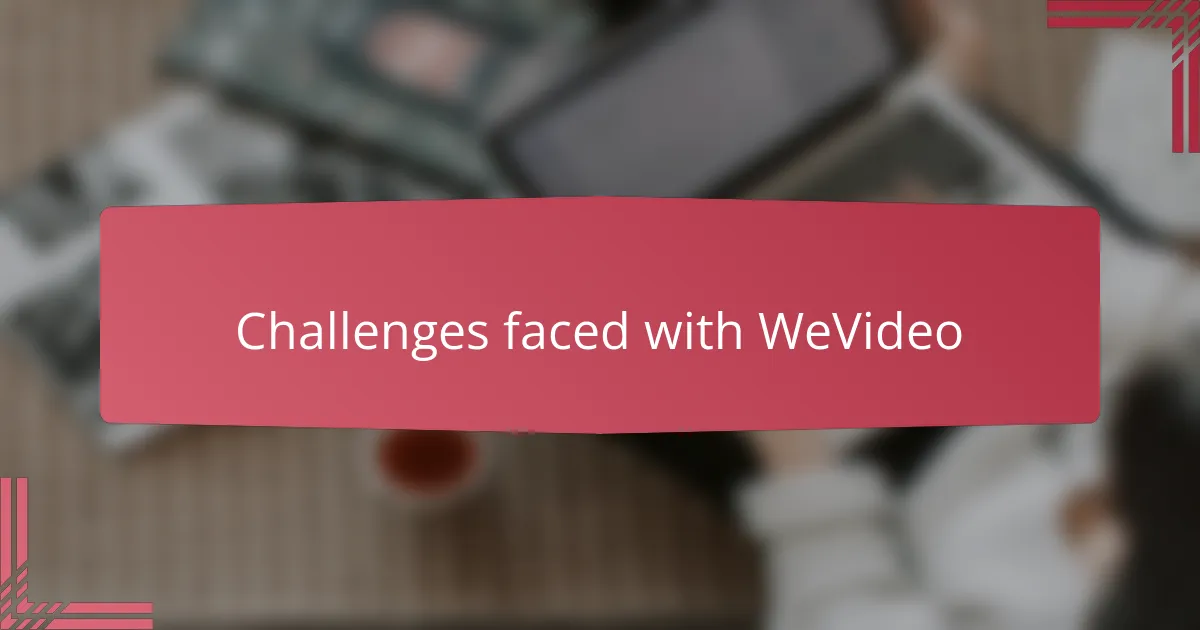
Challenges faced with WeVideo
Sometimes, WeVideo’s cloud-based nature can be a double-edged sword in classrooms with unreliable internet. I remember a project where slow connections disrupted my students’ flow, causing frustration and lost momentum. Have you ever experienced that sinking feeling when technology seems to hold more power over your lesson than you do?
Another challenge lies in the platform’s editing limitations compared to professional software. While WeVideo is beginner-friendly, I’ve occasionally wished for more advanced tools to better refine videos for activist projects. Doesn’t it make you wonder if simplicity sometimes sacrifices creative freedom?
Lastly, not all students immediately embrace digital collaboration. In my experience, some learners hesitate to engage fully in shared projects, unsure how to balance input or voice concerns. How do we foster both confidence and cooperation in a virtual space that still feels new to many?
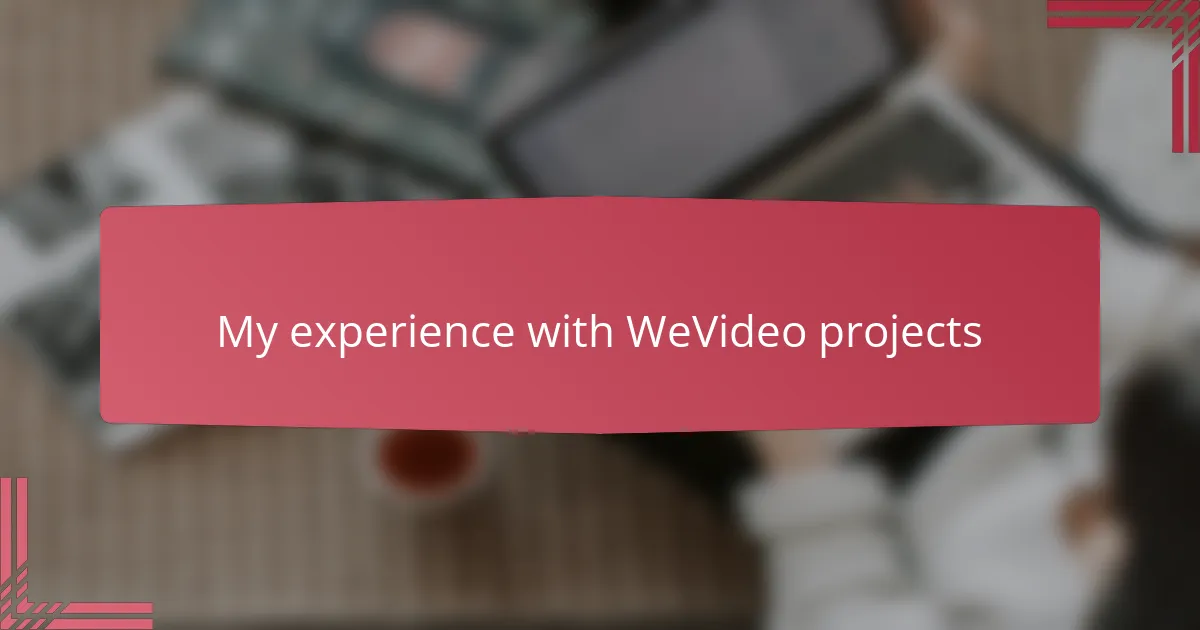
My experience with WeVideo projects
When I first assigned a WeVideo project, I was curious to see how students would handle creating videos that expressed their activist perspectives. What surprised me most was how quickly they embraced the platform; even those who usually shy away from tech jumped in with enthusiasm. Have you noticed how sometimes a fresh tool can unlock creativity you didn’t expect?
One memorable experience was watching a group collaboratively piece together a video on environmental justice. The way they communicated through the editing process reminded me of real activist organizing—each voice mattered, and compromises led to a stronger final message. That moment affirmed to me how WeVideo can model the very skills we try to teach about collective action.
Yet, I also noticed that some students needed more guidance navigating the platform’s features at first. I found myself stepping in to troubleshoot or simplify instructions, which made me appreciate just how important a teacher’s support is in tech projects. Isn’t it reassuring when a little patience and encouragement turn uncertainty into confidence?